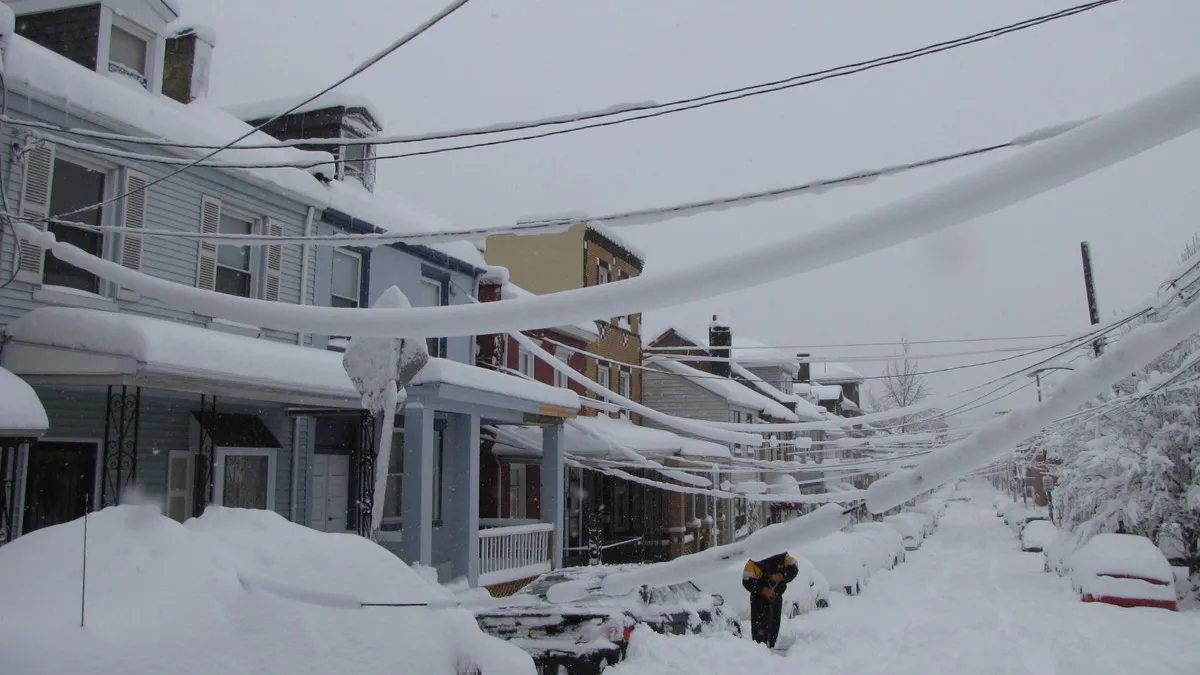Dive Brief:
-
Grid operators throughout the Midwest U.S. say they are prepared as record-breaking cold buffets the region, raising electricity demand and putting energy infrastructure at risk.
-
PJM Interconnection and the Midcontinent Independent System Operator (MISO) put emergency generation procedures into effect this week ahead of a "polar vortex" event expected to dip temperatures into the negative 20s across much of their service areas. As of Wednesday morning, their systems were operating normally.
-
The bigger test may come Thursday, when PJM forecasts record electricity demand across its 13-state service area. Recent cold snaps have exposed vulnerabilities in gas delivery, coal plant operations and transmission lines, sparking market reforms at regional grid operators and grid resilience discussions at the Federal Energy Regulatory Commission (FERC).
Dive Insight:
The Polar Vortex bearing down on the Midwest this week will put recent winter weather reforms to the test in PJM and other markets while stoking the debate over resilience at FERC.
In early 2014, a similar Polar Vortex battered the central U.S., setting power demand records across PJM, MISO and other regional grid operators. During that event, bitter cold temperatures disrupted natural gas pipelines and froze coal piles and mechanical components at generators, rendering some inoperable.
In response, grid operators developed new winter performance standards intended to ensure their generators are prepared for extreme cold. Those reforms were put to the test in ISO-New England last year when the region leaned heavily on dual fuel generators to weather an extended cold snap labeled the "Bomb Cyclone."
During the 2018 cold snap, the 685 MW Pilgrim nuclear plant went offline due to a transmission fault, pushing the ISO to import power from New York to meet demand.
Though cold weather has caused reliability problems with multiple generation resources in recent years, the Trump administration has repeatedly attempted to use the events as justification for its proposals to save struggling coal and nuclear plants from retirement.
In 2017, Secretary of Energy Rick Perry and other senior agency officials repeatedly referenced the Polar Vortex as they pushed FERC to approve a financial support plan for the struggling generators. Coal and nuclear owners also referenced the event in their comments supporting the plan.
FERC rejected the DOE proposal last year, but the agency has continued referencing cold weather events to support coal and nuclear plants as the Trump administration mulls an executive bailout for the generators.
Late last year, DOE's National Energy Technology Laboratory released a controversial report on the Bomb Cyclone that highlighted coal's role in maintaining reliability during the event. Though multiple outside experts panned the report's framing and recommendations, the coal lobby was soon using it as evidence to support its push for financial assistance.
The renewable energy sector has also weighed in to the weather debate, with the wind energy lobby pointing out that its resources performed better than expected in the Bomb Cyclone last year. A recent ISO-NE study also reported that increased offshore wind resources can take stress off gas and dual fuel generators during times of grid stress.
Whatever the outcome of the 2019 Polar Vortex, resource owners are likely to make similar arguments at FERC, which opened a broad proceeding on grid resilience after rejecting the DOE bailout plan last year. Separate proceedings on generator fuel security in PJM and ISO-NE will likely see similar arguments.
Energy researchers, however, say the debate over generator fuel type largely misses the point, as problems with transmission and distribution lines cause the vast majority of outages. An Oct. 2017 analysis from the Rhodium Group found 0.00007% of the total customer outage hours between 2012 and 2016 were due to fuel supply issues — and most of those stemmed from a coal generator.














